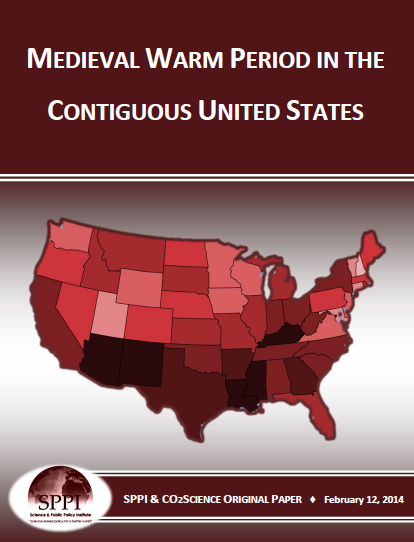News / Science & Technology
Medieval Warm Period in the Contiguous United States

Climate alarmists claim that rising atmospheric CO2 concentrations due to the burning of fossil fuels, such as coal, gas and oil, have raised global air temperatures to their highest level in the past one to two millennia. And, therefore, investigating the possibility of a period of equal global warmth within the past one to two thousand years has become a high-priority enterprise; for if such a period could be shown to have existed, when the atmosphere's CO2
concentration was far less than it is today, there would be no compelling reason to attribute the warmth of our day to the CO2 released to the air by mankind since the beginning of the Industrial Revolution. Thus, in this review of the pertinent scientific literature, results of the search for such knowledge are presented for studies conducted within the confines of the lower 48 contiguous states of the United States of America.
Ingram et al. (1998) conducted isotopic (18O/16O and 13C/12C) and elemental chemical analyses (Sr/Ca and Mg/Ca ratios) of sediment cores taken from Petaluma Marsh, San Francisco Bay, Northern California USA, in an effort to develop a record of paleoenvironmental change in this region over the past 700 years. And their efforts paid off, as they went on to report that high frequency variations in δ18O, δ13C, Mg/Ca and Sr/Ca were noted throughout the 700-yr record, indicating the presence of oscillations in freshwater inflow, temperature and evaporation at periods of 35-115 years. Between 150 and 400 cal yr BP, however, δ18O and Mg/Ca were relatively low, indicative of a period of cold and wet climatic conditions associated with the Little Ice Age. Prior to that, δ18O and Mg/Ca were higher from 480 to 650 cal yr BP, indicating, in the words of Ingram et al., "drier and warmer conditions during the end of the Medieval Warm Period." In addition, they noted that the record "suggests that the duration of wet and dry periods was greater over the past 700 years than in the twentieth century instrumental record."
